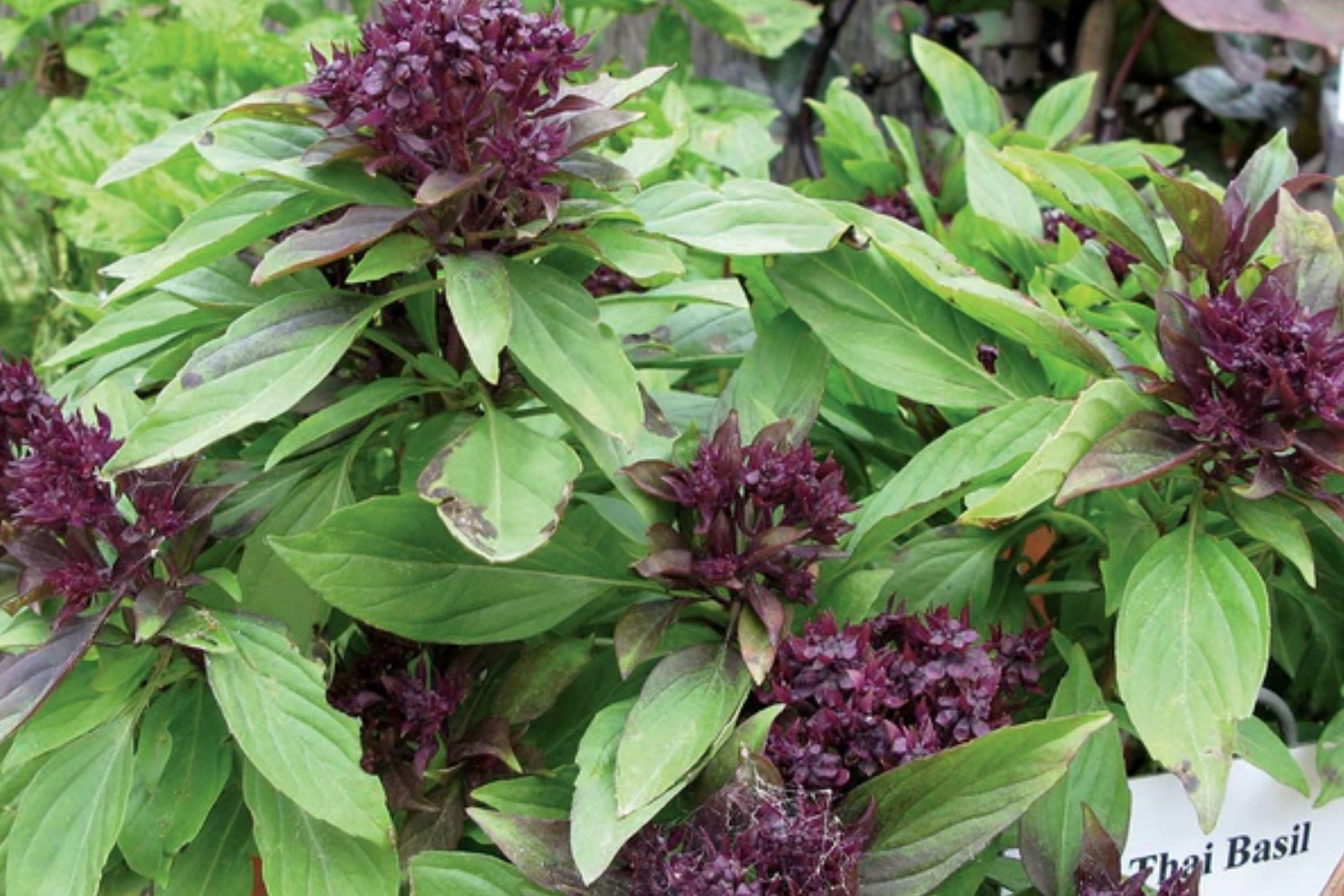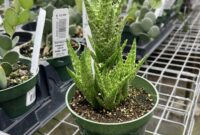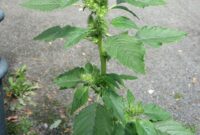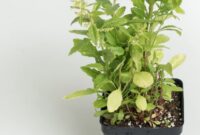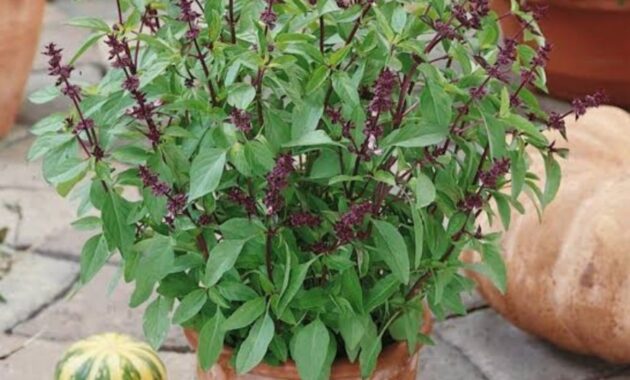
Thai basil, with its distinctive licorice flavor and beautiful purple hue, is a beloved herb in Thai cuisine. Its aromatic leaves add a burst of flavor to stir-fries, curries, and noodle dishes. In addition to its culinary uses, Thai basil offers numerous health benefits. In this comprehensive guide, we will delve into the world of Thai basil, exploring its cultivation, uses, and advantages.
What is Thai Basil?
Thai basil, scientifically known as Ocimum basilicum var. thyrsiflora, is a variety of basil that is native to Southeast Asia. It is easily distinguishable from other basil varieties by its dark purple leaves and sweet, spicy flavor.
How to Plant Thai Basil
Planting Thai basil is a relatively simple process, even for novice gardeners. Here’s a step-by-step guide:
- Choose the Right Location: Thai basil thrives in full sunlight. Select a spot in your garden or on your windowsill that receives at least six hours of direct sunlight daily.
- Prepare the Soil: Ensure the soil is well-draining and rich in organic matter. You can improve the soil quality by adding compost or well-rotted manure.
- Start from Seeds or Seedlings:
- Seeds: Sow the seeds directly into the soil or start them indoors in seed trays.
- Seedlings: Transplant seedlings into individual pots or directly into the garden.
- Water Regularly: Keep the soil consistently moist but avoid overwatering, as this can lead to root rot.
- Provide Adequate Sunlight: As mentioned earlier, Thai basil requires ample sunlight to thrive.
- Fertilize Occasionally: Apply a balanced liquid fertilizer every two to four weeks during the growing season.
Thai Basil Indoor Plant
If you don’t have a garden or live in a colder climate, you can grow Thai basil indoors. Here are some tips for successful indoor cultivation:
- Choose a Sunny Spot: Place your Thai basil plant near a sunny windowsill.
- Use a Pot with Drainage Holes: Good drainage is essential to prevent root rot.
- Water Regularly: Keep the soil moist but not soggy.
- Provide Adequate Light: If natural light is insufficient, consider using a grow light.
Thai Basil for Cooking
Thai basil is a versatile herb that can be used in a variety of dishes. Here are some popular ways to incorporate it into your cooking:
- Stir-fries: Add fresh Thai basil leaves to your favorite stir-fry for a burst of flavor.
- Curries: Use Thai basil to enhance the flavor of your curries.
- Noodle Dishes: Garnish your noodle dishes with fresh Thai basil leaves.
- Sauces and Pestos: Create delicious sauces and pestos using Thai basil.
Thai Basil Leaves
The leaves of the Thai basil plant are its most valuable part. They are rich in essential oils, including eugenol, which gives the herb its distinctive flavor and aroma.
Thai Basil Varieties
While Thai basil is the most popular variety, there are other types of basil that you may encounter:
- Sweet Basil: This is the most common type of basil, with a mild, sweet flavor.
- Lemon Basil: This variety has a citrusy flavor and is often used in salads and desserts.
- Cinnamon Basil: This basil has a spicy, cinnamon-like flavor.
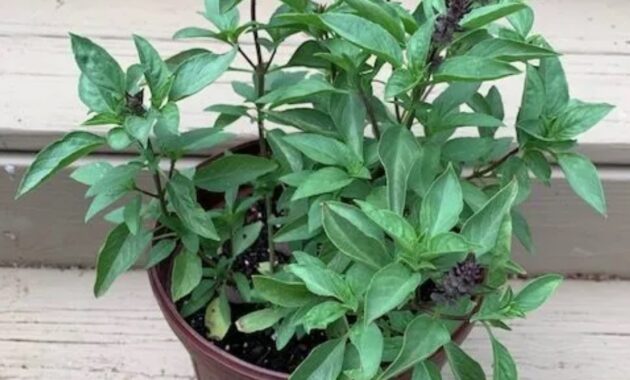
Thai Basil Plant Growing Tips
To ensure healthy and vibrant Thai basil plants, follow these tips:
- Pinch Back the Stems: Pinching back the stems encourages bushier growth and prevents the plant from becoming leggy.
- Harvest Regularly: Regular harvesting promotes new growth and prevents the plant from flowering too early.
- Protect from Pests: Keep an eye out for pests like aphids and whiteflies. You can use insecticidal soap or neem oil to control them.
- Overwintering: In colder climates, you can overwinter your Thai basil plant indoors.
Thai Basil Gardening
Growing Thai basil in your garden can be a rewarding experience. By following the tips above, you can cultivate healthy and flavorful plants.
Organic Thai Basil
Organic Thai basil is grown without the use of synthetic pesticides or fertilizers. It is a healthier and more sustainable option for those who are concerned about the environmental impact of conventional farming.
Thai Basil Plant Health
To maintain the health of your Thai basil plants, it’s important to monitor for pests and diseases. Common pests include aphids, whiteflies, and spider mites. You can control these pests by using insecticidal soap or neem oil. Fungal diseases, such as powdery mildew, can also affect Thai basil. To prevent fungal diseases, ensure good air circulation and avoid overwatering.
Thai Basil Plant Propagation
Thai basil can be propagated through seeds or cuttings.
- Seed Propagation: Sow the seeds in well-draining soil and keep them moist. Germination typically takes 7-10 days.
- Cutting Propagation: Take stem cuttings of about 4-6 inches long and remove the lower leaves. Dip the cut end in rooting hormone and plant it in a pot with well-draining soil. Keep the soil moist and the cutting in a warm, shaded location. Roots should develop within a few weeks.
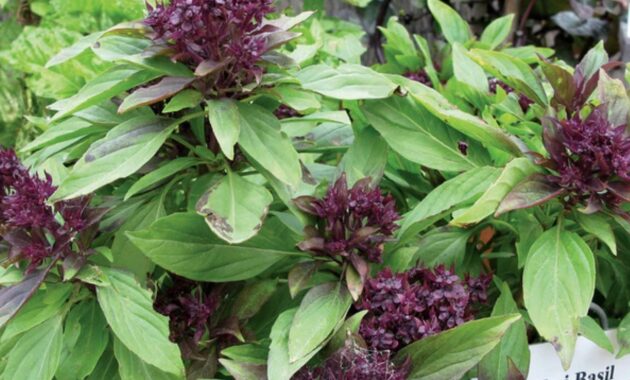
Thai Basil Plant Maintenance
To keep your Thai basil plants healthy and thriving, follow these maintenance tips:
- Regular Watering: Water your plants regularly, especially during hot, dry weather. However, avoid overwatering as it can lead to root rot.
- Fertilizing: Fertilize your plants every 2-3 weeks with a balanced liquid fertilizer.
- Pruning: Prune your plants regularly to encourage bushy growth and prevent them from becoming leggy.
- Pest Control: Monitor your plants for pests like aphids, whiteflies, and spider mites. Treat infestations promptly with insecticidal soap or neem oil.
Conclusion
Thai basil is a versatile herb that can be used in a variety of dishes. It is relatively easy to grow, both indoors and outdoors. By following the tips and techniques outlined in this guide, you can cultivate healthy and flavorful Thai basil plants.
FAQs
- Can I eat Thai basil flowers?
Yes, Thai basil flowers are edible and can be used to garnish dishes or add a floral note to salads. - How long does Thai basil last?
Fresh Thai basil can last for several days in the refrigerator. To prolong its shelf life, store it in a plastic bag with a damp paper towel. - Can I dry Thai basil?
Yes, you can dry Thai basil leaves by hanging them upside down in a warm, dry place. Once dried, store them in an airtight container. - What are the health benefits of Thai basil?
Thai basil is rich in antioxidants and has anti-inflammatory properties. It can help boost immunity, improve digestion, and reduce stress. - Can I grow Thai basil in a hydroponic system?
Yes, Thai basil can be grown hydroponically. Hydroponic systems provide a controlled environment that is ideal for growing herbs.
